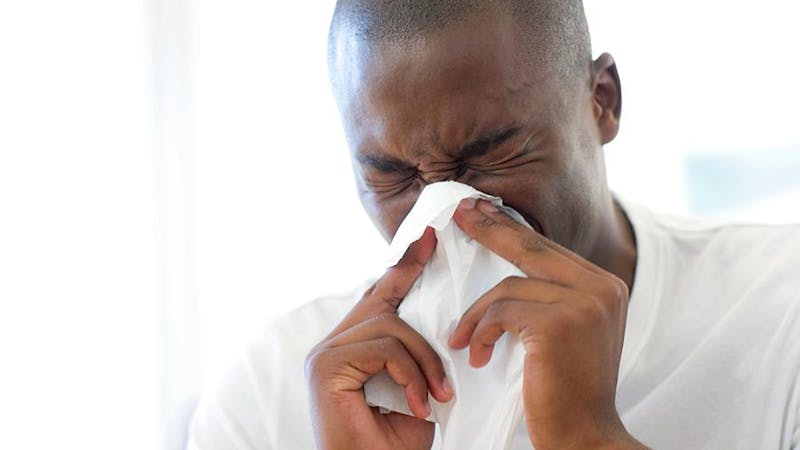
Originally posted on WebMD
by Stephanie Watson
In the past, a cough or sore throat would have been a pretty obvious sign that you’d caught a cold or the flu. During this year’s cold and flu season, you also have to wonder whether you have COVID-19. It’s an important distinction to make. Not only can the new coronavirus cause severe complications, but it’s also highly contagious.
Respiratory illnesses can share so many of the same symptoms — a fever, chills, coughing, tiredness, a sore throat, body aches, a headache, and a stuffed nose — so it’s not easy to tell the difference.
“Unfortunately, there is such a huge overlap between the symptoms of COVID-19 and other respiratory viral illnesses that most of us think it is largely impossible to tell one from another from symptoms alone,” says Lisa Maragakis, MD, senior director of infection prevention at Johns Hopkins Health System.
One symptom that could point you to COVID-19 is the loss of taste and smell, says Monica Lypson, MD, a professor of medicine at the George Washington University (GW) School of Medicine and Health Sciences. “We don’t see those with the other viruses.” Though you might have a gradual, subtle dulling of taste and smell with a cold, COVID is a much more rapid and dramatic loss of these senses, she says.
Another thing that’s different about the new coronavirus is that it can affect blood vessels and cause blood clots. That shows up as symptoms like chest pressure or pain and a severe headache, Lypson says.
The length of the illness is another clue. Cold and flu symptoms will usually go away in 7 to 10 days, while coronavirus symptoms can stick around for much longer. The problem is, by the time you’ve gone a week with symptoms, you might have already exposed a lot of people, says Maragakis.
Is It Fall Allergies?
Allergies also have a lot in common with COVID. They share symptoms like a coughing, shortness of breath, a headache, congestion, and fatigue. One difference is that allergies don’t cause a fever and chills, while COVID-19 doesn’t cause itchy, watery eyes.
Another tipoff is if you’ve had these symptoms before. “Typically, allergies are not new. They don’t come out of the blue,” Lypson says. But even if you’ve dealt with fall allergies in the past, assuming they’re the cause of your symptoms could be risky.
If you assume you have allergies, only to test positive for COVID-19 later, “Then you’re in the position of looking back and saying, ‘How many people might I have exposed when I assumed it was allergies?'” Maragakis says. The safest thing to do if you’re at all uncertain about your symptoms is to get a COVID test.
What to Do if You Have Symptoms
In the past, you might have waited out mild symptoms like a cough or sore throat at home, but this year is different. “Even for mild symptoms, I would recommend testing,” Maragakis says. Call your doctor or local health department. Ask whether you need a COVID test, and how to get one. Many pharmacies and urgent care centers also offer them now, along with drive-up test centers.
While you wait for the results, take precautions. Stay home from work and keep your distance from other people, even in your own household, to avoid spreading the virus.
There are also tests to diagnose the flu, some of which can give you results in 10 to 15 minutes. One test can help pinpoint what’s ailing you by checking for both COVID-19 and two flu strains (influenza A and B). The catch is that it may not be available everywhere. There are also many strains of flu, so a negative test doesn’t rule it out. Maragakis says other combined tests for COVID-19 and respiratory illnesses like the flu are being developed, as well as saliva tests that will make it easier and quicker for more people to learn whether they have the new coronavirus.
Protect Yourself Against Colds, the Flu, and COVID-19
“One way to avoid the diagnostic dilemma is to make sure you get the flu vaccine, or, if you’re older, that you’re up to date on your pneumonia vaccine,” says Lypson. “In both flu and coronavirus, you can end up in the hospital. And what we want to do is maintain our hospital operations for not only people who are sick with the coronavirus, but also everybody else who needs to use our medical services.”
Since all upper respiratory illnesses — colds, the flu, and COVID-19 — spread through respiratory droplets, taking the same precautions that health experts recommend to prevent COVID-19 should also spare you from those other infections. Wear a mask over your nose and mouth, keep at least 6 feet away from other people, and wash your hands often.
Practice extra caution during the holiday season. “The concern is that many people travel to visit family and friends,” Maragakis says. “We know that the SARS-CoV-2 virus is increasing, and frankly is out of control in many parts of our country.” She adds that being indoors in gatherings of more than 10 or 15 people poses a high risk of transmitting the virus. This might be one year when you stay at home and see your family virtually via a Zoom dinner.

